Prunella Clough: Unconsidered Wastelands
- LONDON, United Kingdom
- /
- April 15, 2015
Osborne Samuel gallery is pleased to announce a major exhibition of paintings and drawings by Prunella Clough (1919 - 1999).
Painter, draughtsman and printmaker, Clough was one of the most significant but also one of the most private and modest artists of the second half of the 20th century. However, since her death in 1999, aged 80, her work has been rightfully acclaimed with an important retrospective at Tate Britain in 2007, and she is represented in numerous public museums and private collections across the world.
This new exhibition will feature Clough’s paintings from the 1940s through to the 1990s, with the majority for sale and some on loan from private collections. The exhibition is accompanied by a fully illustrated catalogue with essays by Margaret Garlake and Gerard Hastings.
Born in Chelsea in 1919, Clough attended Chelsea School of Art part-time from 1937 where her tutors included Henry Moore, Robert Medley, Ceri Richards and Julian Trevelyan.
The onset of World War Two abruptly ended her studies; she was conscripted by the Ministry of Labour and worked in the American Office of War Information where she was employed drawing maps and charts. After the war, she attended Camberwell School of Art with Victor Pasmore and began frequent visits to Lowestoft and Southwold, where her Anglo-Irish mother had a holiday home. She also had a close relationship to her aunt, the architect and designer Eileen Gray, and made frequent trips to visit her in Paris.
Clough found inspiration in the detritus and aspects of urban and industrial life and painted in a narrow tonal range of greys and browns in the early years. Her early subjects include lorry drivers, crane operators, fishermen, lobster pots and industrial detritus.
She went on drawing trips to the new industrial estates of Kent, accompanied by her friend Ghisa Koenig, and she also favoured drawing and painting factory workers in the Peek Frean biscuit factory in Bermondsey. The factory, which inspired so many of her works, was owned by the family of the painter David Carr. For over 20 years, Carr remained the most important person in Clough’s life.
Clough came to be closely associated with the Neo-Romantic painters of the post-war period who gathered at Camden Hill Studios and the pubs and clubs of Soho. They included ‘the two Roberts’ (Colquhoun and MacBryde), John Minton, John Craxton and Keith Vaughan.
Later in her life, she was regarded largely as an abstractionist but a figurative base remained as a core. In the 1950s she introduced plant forms into her urban scenes and by the 1960’s her work became looser and freer, but retained a sense of edginess in the subject matter to find beauty in the industrial wastelands of Britain. In 1960, distinguished Whitechapel Gallery Director Bryan Robertson gave Clough her most important show to date at the Whitechapel Gallery, entitled Prunella Clough: A retrospective exhibition.
INFO@OSBORNESAMUEL.COM
020 7493 7939
23A Bruton Street

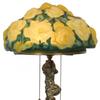

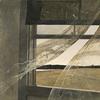

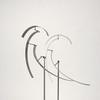
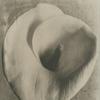



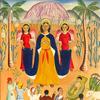
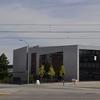



![Offering a Truce [Bested], 1895, is estimated to sell for between $1,300,000 and $1,800,000 on March 22, 2014, for The Russell: An Exhibition and Sale to Benefit the C.M. Russell Museum. Offering a Truce [Bested], 1895, is estimated to sell for between $1,300,000 and $1,800,000 on March 22, 2014, for The Russell: An Exhibition and Sale to Benefit the C.M. Russell Museum.](/images/c/a8/20/Dec10_Offering_a_Truce__Bested_300dpi100x100_c.jpg)